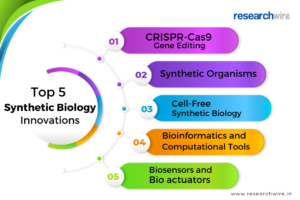As a Founder and Managing Director, Bikram plays a key role in the day to day operations and formulating strategies for smooth execution of research assignments. Bikram is also responsible for client acquisition and client engagements in Asia pacific region. Bikram helps global technology companies monetize their IP assets through automated tools and helps them generate more value out of their IP. He has the expertise of assisting clients on a wide range of technologies such as Semiconductors (circuits and processes), Wireless Technologies, Memory Devices, Cloud Computing, and Consumer Electronics.
Bikram has been advising several Global 500 clients in effective patent portfolio optimization and competitive benchmarking analysis to help them understand their position in the industry. Bikram has extensive experience in assisting clients on high stake US, Japanese and Chinese patent litigation cases. Recently, Bikram has been actively involved in advising clients on new product development strategies and technology Landscape studies.
Synthetic biology is a new field where scientists use engineering principles to create new biological components and systems that don’t exist naturally. They can make DNA sequences quickly and at a lower cost, which allows them to design and build modified bacterial chromosomes. These modified chromosomes have various applications, including producing advanced biofuels, renewable chemicals, and even healthcare products.
Synthetic biology discipline is made of two sub-parts. In one part, scientists use molecules that don’t exist in nature to make things like natural living things. They aim to create artificial life. In the other part, scientists look for parts in nature that they can use to build systems that behave in unusual ways. In both cases, the scientists must explore new territory and face problems that can’t be easily solved with regular methods. This leads to new and different ways of thinking that traditional analysis can’t achieve.
Advancements in synthesis capabilities are rapidly automating DNA production when provided with the sequence, merging biology and engineering. In the future, researchers might create synthetic organisms capable of producing pharmaceuticals and industrial products like biofuels on a commercial scale. The potential socio-economic benefits are– vast, but so are the risks of misuse. Concerns encompass bioethics, environmental impact, and the potential for bioterrorism, including the illegal development of bioweapons, like genetically engineered viruses targeted at specific groups.
How Synthetic Biology is revolutionizing the world
According to a recent McKinsey report, the bio revolution is expected to generate substantial global impact, potentially reaching up to $4 trillion annually over the next 10-20 years. This revolution could enable the production of 60% of the physical inputs to the global economy and effectively address world’s 45% current disease burden. However, to fully unlock the potential of synthetic biology applications, it is crucial to ensure equitable access and development of knowledge in this field, along with the necessary research tools, even in low-resource contexts. This approach can prevent the technology from becoming concentrated solely in advanced, resource-rich economies, and it can help reduce disparities and inequalities in the global bioeconomy.
Dr. Jenny Molloy, a Senior Research Associate at the University of Cambridge’s Department of Chemical Engineering and Biotechnology, specializes in studying the impact of open approaches to intellectual property on creating a sustainable and fair bioeconomy. Her expertise has led her to be a member of the World Economic Forum Global Future Council on Synthetic Biology.
Her research focuses on understanding the challenges faced by researchers in accessing biological research tools, particularly in Latin America and Africa, where resources are limited. To address this issue, her team works on developing innovative technologies for local, distributed manufacturing of enzymes, aiming to enhance access and capabilities for biological research in these regions.
Additionally, Dr. Molloy aims to contextualize “open source” biotechnology approaches within the current discussions on innovation and bioeconomy policy.
Top 5 Synthetic Biology Innovations
In recent years, the field of synthetic biology has witnessed a plethora of groundbreaking innovations, and its progress has been exceptionally swift. What was once confined to the realms of science fiction is now steadily materializing into reality. The convergence of artificial intelligence, genome mapping, and enhanced computing prowess has spurred researchers to swiftly embrace novel methodologies and further enhance their capabilities. Synthetic biology holds the potential to revolutionize our approaches to food production, energy systems, and medicine, offering valuable solutions to the most pressing challenges confronting our society today.
While synthetic biology has seen numerous innovative developments, here are some groundbreaking advancements that are significant:

- CRISPR-Cas9 Gene Editing: CRISPR-Cas9 is a revolutionary gene-editing tool that allows scientists to precisely modify DNA in living organisms. It has enabled significant advancements in various fields, from basic research to potential therapies for genetic diseases.
- Synthetic Organisms: Scientists have successfully created synthetic organisms with artificial DNA, expanding the genetic code beyond the naturally occurring bases (A, T, C, G). These organisms have the potential to perform specific functions, such as producing biofuels or cleaning up environmental contaminants.
- Cell-Free Synthetic Biology: Traditional synthetic biology often relies on living cells to carry out engineered functions. However, cell-free synthetic biology involves extracting cellular machinery and using it in vitro. This approach allows for more controlled and precise engineering, making it useful for various applications, including biomanufacturing and diagnostics.
- Bioinformatics and Computational Tools: The advancement of bioinformatics and computational tools has significantly enhanced the design and analysis of synthetic biology experiments. These tools allow researchers to model biological systems, predict outcomes, and optimize genetic constructs more efficiently.
- Biosensors and Bio actuators: Synthetic biologists have developed biosensors capable of detecting specific molecules or environmental conditions. These biosensors can be used in a wide range of applications, such as environmental monitoring, healthcare, and industrial processes. Additionally, bio actuators have been engineered to respond to specific signals, enabling controlled and targeted cellular responses.
IPR Issues surrounding Synthetic Biology
Synthetic biology’s socio-economic potential has attracted significant public and private investments, prompting discussions on its impact on society. The field’s foundation in DNA as an information carrier has led to the integration of information and molecular biology, presenting challenges for the existing intellectual property (IP) system. The current IP framework wasn’t designed for the patenting of living matter carrying information, resulting in strain and ambiguity. Synthetic biology’s unique features, like the expansion of genetic alphabets, introduce complexities in interpreting IP laws, especially when judges lack deep scientific knowledge.
Synthetic biology’s core principles align with recombinant DNA techniques, but its advancements enable larger, more accurate, and faster genetic changes. The key IP concern lies in determining fair allocation of rights to maximize socio-economic benefits for society. This chapter outlines the relevance of synthetic biology, the IP it may generate, and proposes changes to patent laws to address the evolving socio-economic landscape.
Synthetic Biology Application & Patent Landscape
Synthetic biology has been the subject of patents for many years, covering various inventions such as genetically modified microorganisms, metabolic gene clusters, and DNA synthesis methods. While there have been some specific patent applications for advanced synthetic biology concepts, their numbers remain limited. Analysing these pre-existing patents can be complex but essential for ensuring companies’ “freedom to operate” in the field or establishing open licensing and collaboration models.
A legal challenge might arise if synthetic biology systems become so distinct from biological systems that they are no longer considered “biological material.” In such cases, they would be treated like inventions in other technology fields, such as chemistry or nanotechnology. However, this doesn’t imply that such inventions would not be patentable. Whether specific provisions for the patentability of non-biological self-replicable systems are necessary would be a matter for legislative and societal discussion.
The number of synthetic biology patents, particularly in industrial biotechnology and medicine, is on the rise. UK’s contribution to synthetic biology patents can be attributed to its historical focus on applying biotechnology in the pharmaceutical sector. There is also significant interest in patents related to fuel and energy production, driven by the growing need for fossil source independence and biofuel production. Leading European countries like Germany, France, Italy, and Spain show substantial interest in the supply, transformation, and consumption of biofuels. This indicates a potential commercial viability of synthetic biology applications in this area soon.
According to The National Library of Medicine report, USA has played a significant role in the development of synthetic biology patents, likely due to its long history of advancement in biotechnology. The country has a robust biotechnology industry with numerous firms, investments in biotech R&D, and a strong presence in industrial biotechnology. Japan has also made a substantial impact in the field, and other Asian countries like South Korea and China show notable patent filing activity.
While European countries generally trail behind the USA in synthetic biology patent applications, Germany and the United Kingdom stand out as the most active in Europe. Their prominence in the chemical sector might have influenced their interest in synthetic biology, especially for producing chemicals as an alternative to fossil fuels. However, further research is needed to confirm this speculation.
Future Trends in Synthetic Biology
Synthetic biology offers innovative ways to engineer new biological systems or modify existing ones for practical applications across various fields, such as healthcare, agriculture, manufacturing, and environmental issues. It is considered a disruptive technology with the potential to address global challenges. While there have been successes in producing valuable chemicals and drugs, some believe that synthetic biology has not fully lived up to its promise.
Governments have expressed concerns about the potential risks associated with synthetic biology, which has led to the need for developing detection and monitoring systems and preparing countermeasures against chemical and biological threats. Government representatives are actively engaging with the synthetic biology community to stay informed about emerging threats and make informed decisions about science and technology investments and regulatory processes.
The cost of DNA sequencing and synthesis has significantly decreased, providing greater access to genetic information and more powerful genetic engineering capabilities. This has led to considerable progress in using synthetic biology to address challenges in medicine, food and energy production, environmental remediation, manufacturing, and national security. However, there are still challenges that synthetic biology must overcome to fully realize its potential.
In summary, synthetic biology has shown promise in solving various global challenges, but it faces obstacles that need to be addressed for its full potential to be realized.
Conclusion
Harnessing the transformative power of synthetic biology demands a delicate balance between innovation, intellectual property, and ethical considerations. As stakeholders engage in this profound journey, protection of ideas through patents becomes paramount. Navigating the intricate landscape of synthetic biology requires specialized expertise, and enterprises such as Researchwire provide insights and services that empower innovators to shape the future responsibly.
How to protect your ideas? What are the advantages of a patent? How do you file a patent? How much money and time will it cost you? How can patents be used? If you are a stakeholder in the innovation ecosystem and are looking to get insights into trends in specific technology areas to better position yourself in making proper business decisions, or are developing, or planning to develop, a strong patent portfolio around specific technologies and its use cases, reach out to Researchwire.
Researchwire is an ISO 27001 certified, specialised IP research and R&D support company. Works closely with IP & legal teams to provide patent portfolio services and all types of patent searches & patent drafting. It provides enterprises and R&D centres with insightful and effective solutions to address their technology development challenges and roadmap planning.



